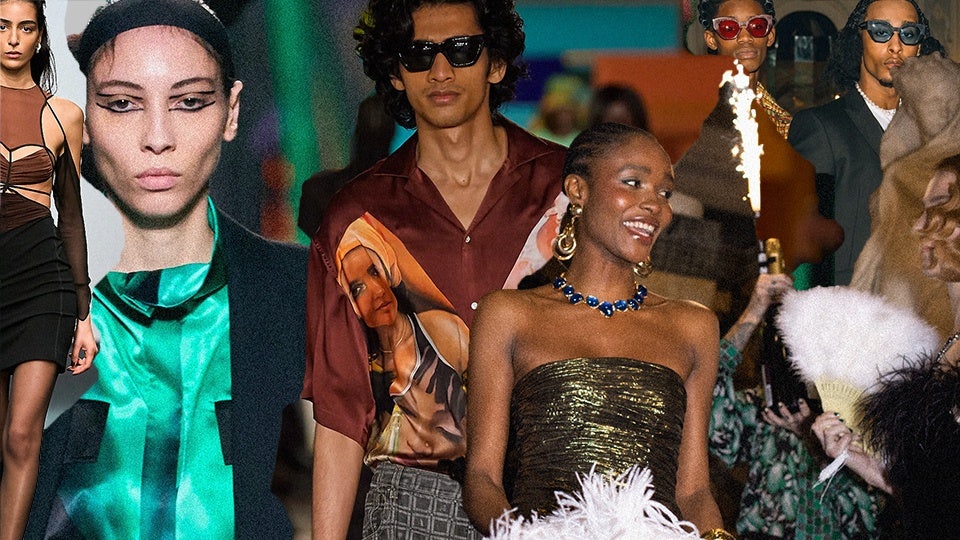Despite storm Eunice and gale-force winds, fashionistas braved the weather to flock to London Fashion Week, which returned with a hybridized physical season curated by the British Fashion Council. Altogether, the city hosted a remarkable 129 brands across 86 physical activations (plus 61 digital) from February 18 to 22, 2022.
England’s COVID-19 policy stands in remarkable contrast to China’s, as shows were often packed, regardless of the venue size. The party mood was evident in the city-wide schedule based around retailer Selfridges. Whether it was Rixo’s lavish champagne fountains or Ozwald Boateng's epochal return, the pandemic might have been a distant memory.
This escapism was seen in Roksanda which partnered with the Institute of Digital Fashion and Clearpay to create a shoppable NFT for its demi-couture final runway look; it was also found in the elasticity of newer talents from Ahluwalia and Saul Nash to Nensi Dojaka and Chet Lo, all of which drew buyers’ eyes.
Amid ongoing travel restrictions, Chinese KOL participation was understandably low, and attempts to dialogue with the market were sparse. The Paris-based influencer and fashion editor Jiawa Liu even questioned if London Fashion Week is the appropriate vehicle for engaging the Chinese market at this time. As she pointed out, media seat allocations were reduced for the Asian press for many seasons running, and there seemed to be a reduced emphasis on digital offerings alongside physical shows.
“Perhaps the feeling in the room is that London Fashion Week is, at its core, a domestic-facing format intended to court British and European press and buyers, while brands seeking to gain Chinese market shares are concentrating elsewhere — such as investing in Chinese social platforms,” Liu suggested. However, despite the disconnect between London's names and China, local brands, on the other hand, used the schedule to their advantage — physically and digitally.
Here, Jing Daily analyzed highlights from the luxury brands and local designers showing at all four fashion capitals by using the following parameters:
Brand history:#
considers existing brand history in China, including overall presence, social reach, number of stores, earning trends, and brand missteps.
Market potential:#
analyzes local consumer preference for the brand through design (how the brand’s collection will speak to the Chinese audience based on current trends and preferences) and digital impact (netizen mentions and perceptions on leading social media platforms including Weibo, WeChat, and Xiaohongshu).
KOL & celebrity visibility:#
considers the star power associated with the brand through strategic KOL and celebrity partnerships.
Special brand efforts:#
where relevant, consider special programs or efforts on a brand’s part to speak to the Chinese audience. Company or brand contributions toward the ongoing virus crisis are also considered.
Feng Chen Wang#
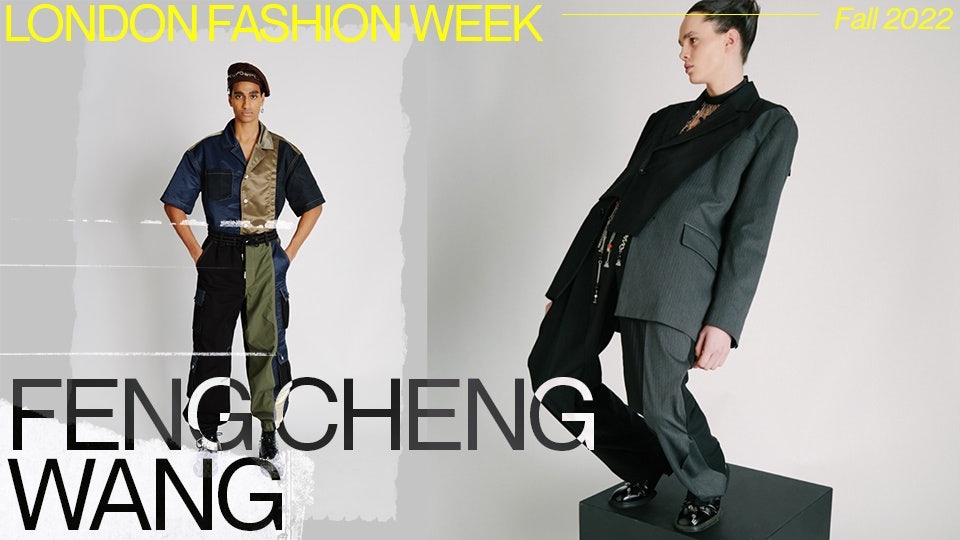
Brand history:#
Based between London and Shanghai, Feng Chen Wang is one of China’s leading talents. Her brand is on both Weibo and Xiaohongshu, where it has a combined following of 180,000 followers. In China, it works with 11 renowned multi-brand stores, including Lane Crawford, DSM, and The Balancing.
Market potential:#
Feng Chen Wang’s interpretation of traditional Chinese aesthetics and her infusion of this into modern garments have helped her cultivate a loyal following of buyers, making her potentially massive. She was recently selected to design the official uniform of the Olympic flag bearers during the Opening Ceremony of the Games, which attests to her bankability. The brand is also beloved by global fashion giants (ongoing collaborations include Converse, UGG, and Levi’s).
KOL & celebrity visibility:#
The domestic label is well-loved by celebrities and has been seen draped on many popular actors and singers, such as Hua Chenyu, Ding Yuxi, and Henry Lau. The brand also shot campaigns with actors Victor Ma, Bai Yu, and Guan Hong to promote its Spring 2022 collection.
Special brand efforts:#
Its gallery show in London was the ideal blend of London and Shanghai. To promote the show and reveal the collection’s inspiration, Feng Chen Wang partnered with NetEase Fashion (54,000 followers on Weibo) to livestream it in China. The event also featured pieces from the Olympic commission, and its location hinted at new announcements from the label, soon to be revealed.
Pronounce#
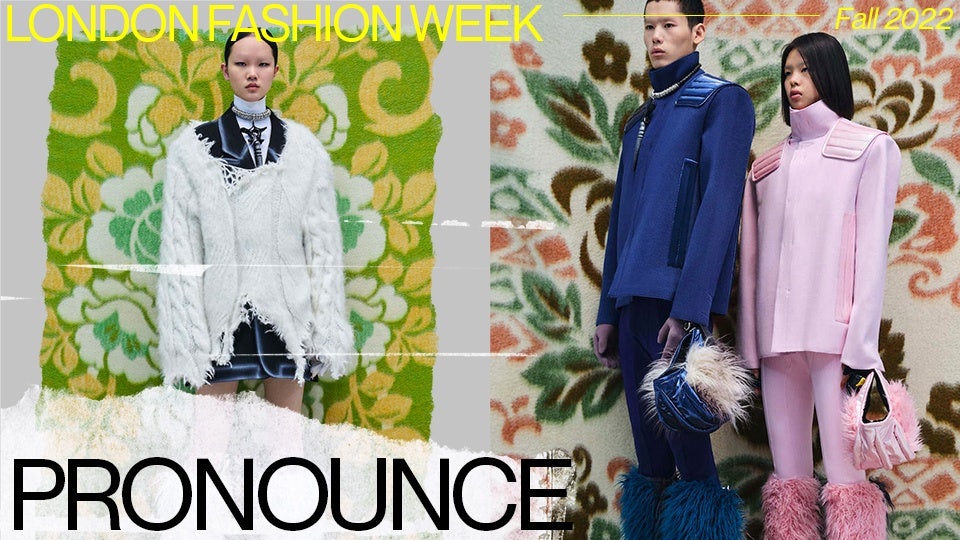
Brand history:#
Well known to Jing Daily readers, Pronounce has established a strong presence on Chinese social media platforms, earning a combined following of 35,000 followers on Weibo and Xiaohongshu. The rising duo Yushan Li and Jun Zhou have stockists all over China in Tier-1, Tier-2, and Tier-3 cities, including major multi-brand stores like Réel, I.t, and Labelhood.
Market potential:#
Pronounce is a promising domestic label beloved by local young consumers. On Xiaohongshu, the brand has launched over 4,200 instances where users have shared their Pronounce outfits. In particular, its collaboration with the international sportswear brand Puma has resonated very well with homegrown consumers. Thus far, only the local blogger @modequoi has posted about the show on Weibo.
KOL & celebrity visibility:#
The brand smartly leverages a series of style icons and idols — such as C-pop band member Wu Xuanyi, actress Cecilia Song, and actor Zhang Yunlong — to increase the appeal of its collections with domestic audiences, who tend to buy celebrity-worn outfits. It also regularly makes appearances in major magazines such as Harper’s Bazaar.
Special brand efforts:#
One week before the fashion presentation, Pronounce shared some of its notes to share the inspiration behind its collection “Modern Nomad” to involve the customer in the creative process. The presentation video showed rotating models in 360 degrees to allow viewers all-around access and has garnered 1,092 views so far.
Huishan Zhang#
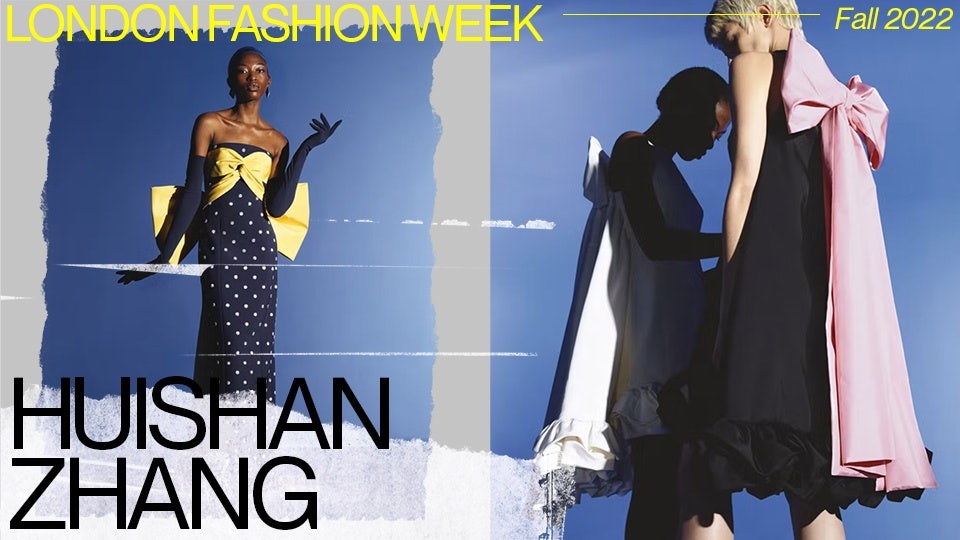
Brand history:#
Founded in 2011, London-based luxury brand Huishan Zhang is renowned for its romantic designs combining Eastern heritage and Western influences. The label is stocked worldwide and at prestigious retailers in China, such as SKP Beijing and Joyce. It currently has a healthy following of 126,000 fans on Weibo.
Market potential:#
Thanks to media outlets Harper’s Bazaar, Sina Fashion, fashion KOL @单品毁灭者, and others, Huishan Zhang’s Fall collection reached 22 million people on social media. The reaction from Chinese audiences was also highly positive, and netizens enjoyed its clean and elegant silhouettes.
KOL & celebrity visibility:#
Millennial entrepreneur and Yu Prize founder Wendy Yu and former Vogue China editor in chief Angelica Cheung are often seen wearing Huishan Zhang’s glamourous dresses and suits at events.
Special brand efforts:#
As part of Shangri La's 50th anniversary, the five-star hotel chain asked Asia’s leading creatives and personalities to share their stories in a video. Huishan Zhang’s video, where he talks about his own story, has garnered over 11,000 views thus far.
Mithridate#
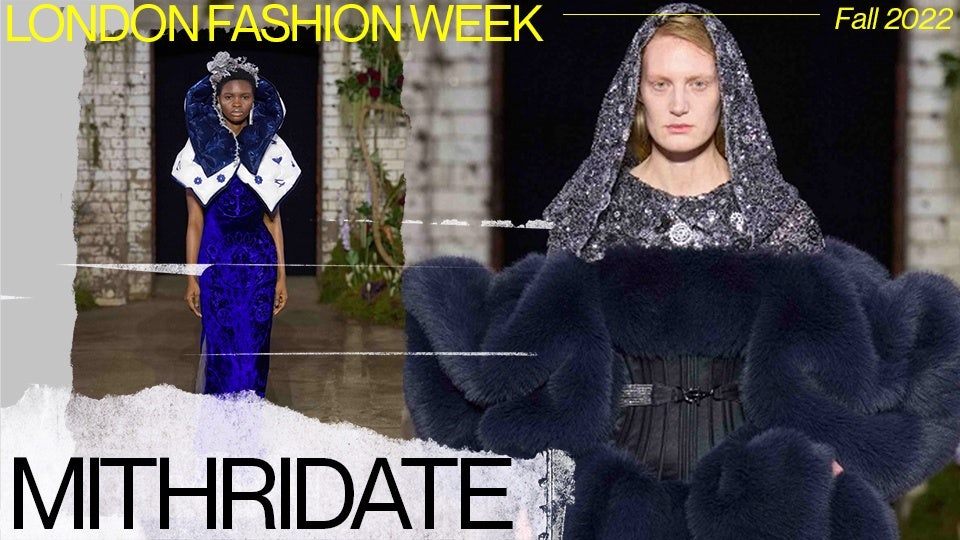
Brand history:#
Founded in 2018 by Demon Zhang, Mithridate is an emerging gender-neutral Chinese brand and newcomer to the schedule. Zhang’s work celebrates bespoke craftsmanship combined with Chinese artisanal techniques. And, with seven stores already in premium shopping locations, Zhang’s now wants to expand Mithridate’s name globally.
Market potential:#
The brand is highly active on Weibo (14,000 followers) and Xiaohongshu (3700 UGC instances). Its eye-catching runway garments were diffused as a way to target local consumers' in-store needs.
KOL & celebrity visibility:#
Mithridate’s show collaboration with opera actor Zheng Yunlong — who enjoys 1.4 million followers on Weibo — helped it reach a large audience. Zheng’s fans have been reposting and showing their support, especially since the label was worn by renowned Chinese actress Dilraba, who amplified it to her 77 million Weibo followers.
Molly Goddard#

Brand history:#
Molly Goddard was founded in 2014 and is known for traditional hand pleating, smocking, and the use of tulle to create voluminous fairy-style silhouettes.
Market potential:#
The collection was posted by fashion KOLs like @Frigaciak and @单品毁灭 on Weibo. Some netizens praised the bags, with Weibo user @Gemma_Snaps stating: “I've been infatuated with this brand." While the London-based designer label has over 484 posts on Xiaohongshu (a noteworthy amount), it still has no official socials in China. Unsurprisingly there was low netizen engagement for this show, but it is worth noting that shoppers can buy Goddard's puffy dresses through Farfetch and NET-A-PORTER.
KOL & celebrity visibility#
: This new collection barely reached Chinese audiences, and the company's not advertising to China may be one of the reasons. But when one of the Mainland's favorite singers — Rihanna — wears the label on various occasions, it is equivalent to the brand saying ‘hi.’ Overall, the brand needs an official communication channel to cater to and engage with absent local audiences.
Nensi Dojaka#
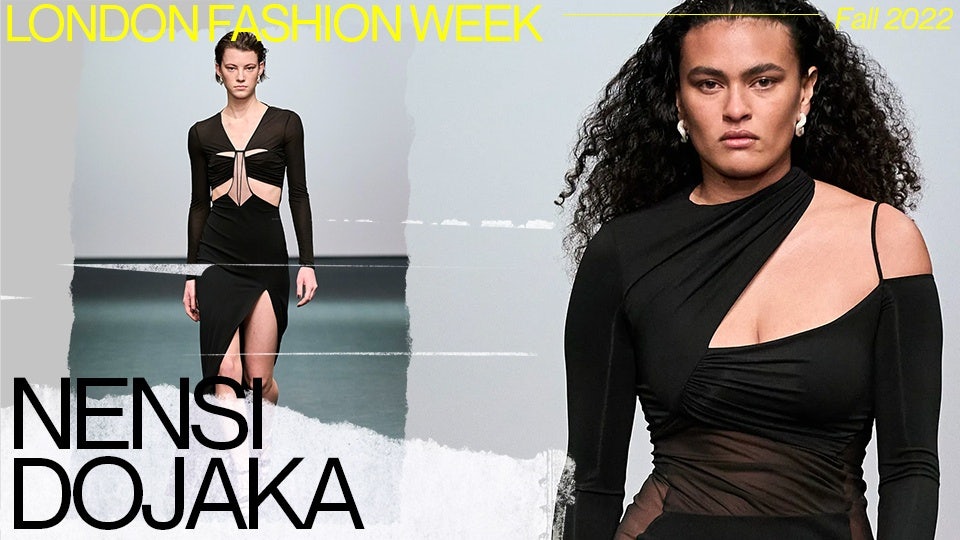
Brand history:#
Born in Albania, Nensi Dojaka graduated from Central Saint Martins — a school well-liked by Chinese students. The womenswear designer founded her namesake brand in 2017 and launched its first collection on the platform Fashion East. It was also the recipient of the 2021 LVMH Prize for Young Designers.
Market potential:#
The brand has over 200 UGC posts on Xiaohongshu, and its relevant posts on Weibo have exceeded 900,000. However, since it has not launched any official social media accounts or sales channels in China, products made available on local e-commerce platforms mostly get sold by copycats.
KOL & celebrity visibility:#
Local fashion media outlets like Tencent Fashion, Haibao Fashion, and China i-D magazine and fashion KOLs like @Maissen-H, @Mars业余时装评论, and @Dipsy reported on the brand's FW 2022 collection. Netizen feedback on the presentation is generally positive, but some commented that this collection is somewhat similar to Mugler and Saint Laurent's.
Rixo#
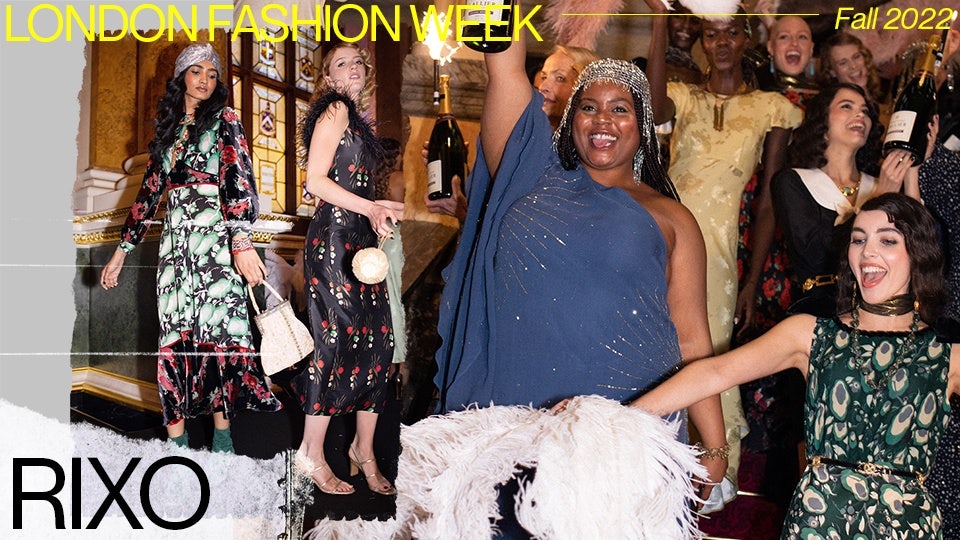
Brand history:#
Founded in 2015 in the London living room of Henrietta Rix & Orlagh McCloskey, Rixo was born from a passion for vintage and a free-spirited, bohemian aesthetic that has already won them a legion of customers and fans.
Market potential:#
Although the brand does not currently have an agenda for China, it has earned a reputation on the Mainland. According to Xiaohongshu, netizens enjoy sharing its runway looks: there are 46 posts in Xiaohongshu, a total of 1331 comments, 3308 favorites, and 921 shares. It is also available online through NET-A-PORTER or the high-end women’s fashion store LOOKNOW.
KOL & celebrity visibility:#
The brand did not collaborate with any celebrities or KOLs for the show, but it has earned fans through actress Emma Roberts, who resonates with numerous Chinese girls (the brand should take note of an easy goal here!)
Roksanda#
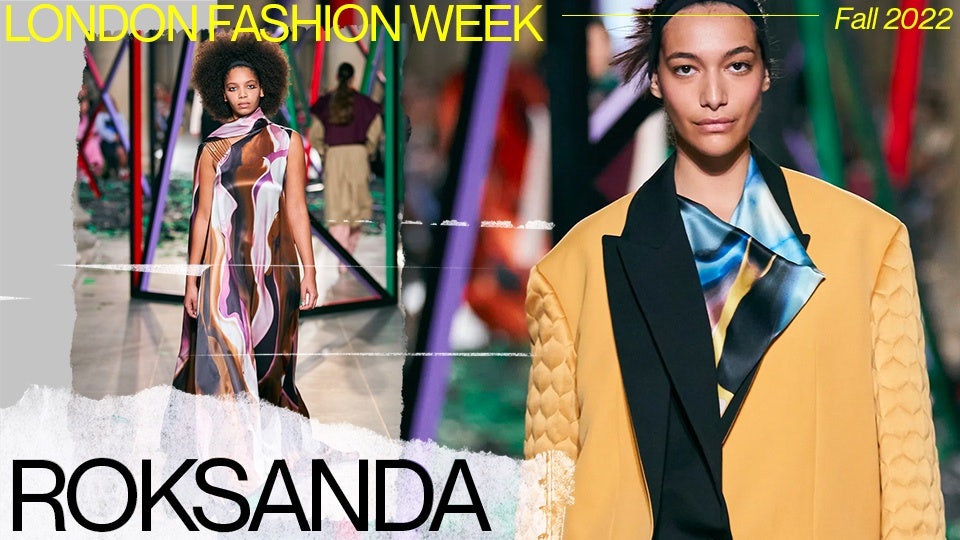
Brand history:#
Serbian designer Roksanda Ilincic graduated from Central Saint Martins in womenswear design and founded her label in 2005. The brand has developed a distinctly woman-centric design aesthetic, featuring color blocks, architectural silhouettes, and innovations in tailoring and fabrics.
Market potential:#
The brand has shown nearly 50 fashion collections, but awareness in the Chinese market is still relatively limited. It only has 360 related posts on Xiaohongshu, less than ten media reports, no stores, and its only retail channels are platforms like NET-A-PORTER and Farfetch. This collection debuted a well-executed-if-unlikely collaboration with Fila, which could work as a draw for local consumers.
KOL & celebrity visibility:#
As of February 22, only Sina Fashion and KOL @FreeakSeven posted the runway looks. The brand's overall social exposure is lower than other designer brands featured in LFW this season.
Reported by Lisa Nan, Wenzhuo Wu, and Gemma A. Williams
